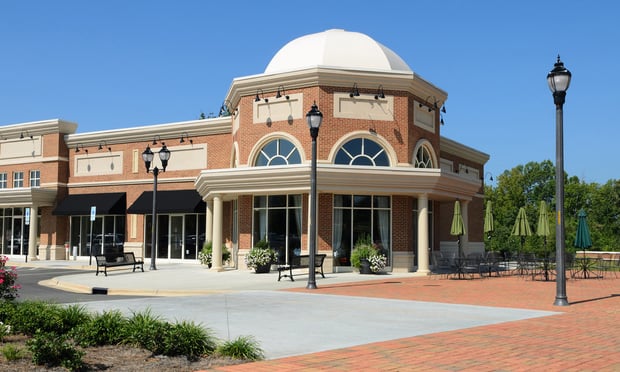Over $5 billion of retail properties were traded in the Southeast in 2003 with REITs and institutional investors dominating the play. REITs accounted for 44% of the total transactions; private market investors, 32%; institutional and pension fund advisors, 10%; and foreign buyers, 4%.
Active players were Weingarten, Kimco, Inland, Heritage, Ramco Gershenson and Equity One among REITs; DLC, First Allied, Perrine and Wheeler, Kite Development, Sterling Centre Corp., Steven D. Bell and Woolbright Development in the private investment group category; JPMorgan, Investcorp, Principal, Rreef and American Realty Advisors on the institutional side; and Ross and BVT in the foreign sector.
"Some of the most aggressive bidding came from high-net worth individuals or other less transparent sources, including the new syndicators of the current market," says Gary T. Saykaly, NewBridge's managing partner.
"New investment sources are emerging to acquire partial interests of retail properties where the existing debt would significantly impact value on an outright sale basis," Saykaly says. "These investors will base their partial interest valuation as if the property was unencumbered. The seller retains the management and leasing (responsibilities) and 25% to 50% of the property, but can raise close to what he would have generated on an outright sale."
Another trend Saykaly and his associates are seeing is "front load bell curve pricing." This strategy involves "motivated investors, many of whom are new to the market, coming in and outpricing the bulk of the active bidders who were group in a tight range."
Saykaly says "aggressive pricing continues to be assisted by the narrowing of CMBS spreads and creative loan structures from traditional lenders." Some creative concepts include hybrid interest only and 30-year amortization, allowing the spread between the cap rate and the leveraged cash on cash to exceed 550 basis points, the NewBridge executive says.
"The abundance of capital created new equity structures for developers, owners and investors to exploit for their acquisitions, developments and recapitalizations, providing increased profits over the traditional JV structure, such as gap equity, forward takeouts, preferred equity and mezzanine," Saykaly says.
He and his associates also have noticed that earlier market predictions on cap rates rising sharply in 2004 haven't occurred so far. "Investors expected that with the improvement of the stock market and the resulting outflow of capital and potential increase in interest rates, cap rates would start increasing," Saykaly says. "However, this has not been the case for quality retail centers, both anchored and unanchored."
He says that while there has been an outflow of capital from real estate back into the securities market, "there remains excess demand, which is keeping cap rates from being impacted at this time." The broker says "many of these securities market investors have now seen the benefits--that is, diversification--of real estate investment and will continue to allocate some portion of their funds into the asset class."
Saykaly adds, "Attractive spreads and Treasury rates continue to provide investors with positive leverage on aggressive transactions. Treasury rates, which should be moving up due to improved economic data, remain low."
"Who would have ever thought that actions of the Bank of Japan, such as keeping their exports competitive, would impact the pricing of commercial real estate in the United States?" he adds.
If rates do increase sharply, cap rates "will eventually be impacted," Saykaly says. "On a short-term basis, the pent-up demand and use of shorter term structures might minimize the initial increase, but eventually they will give."
Continue Reading for Free
Register and gain access to:
- Breaking commercial real estate news and analysis, on-site and via our newsletters and custom alerts
- Educational webcasts, white papers, and ebooks from industry thought leaders
- Critical coverage of the property casualty insurance and financial advisory markets on our other ALM sites, PropertyCasualty360 and ThinkAdvisor
Already have an account? Sign In Now
© 2024 ALM Global, LLC, All Rights Reserved. Request academic re-use from www.copyright.com. All other uses, submit a request to [email protected]. For more information visit Asset & Logo Licensing.








